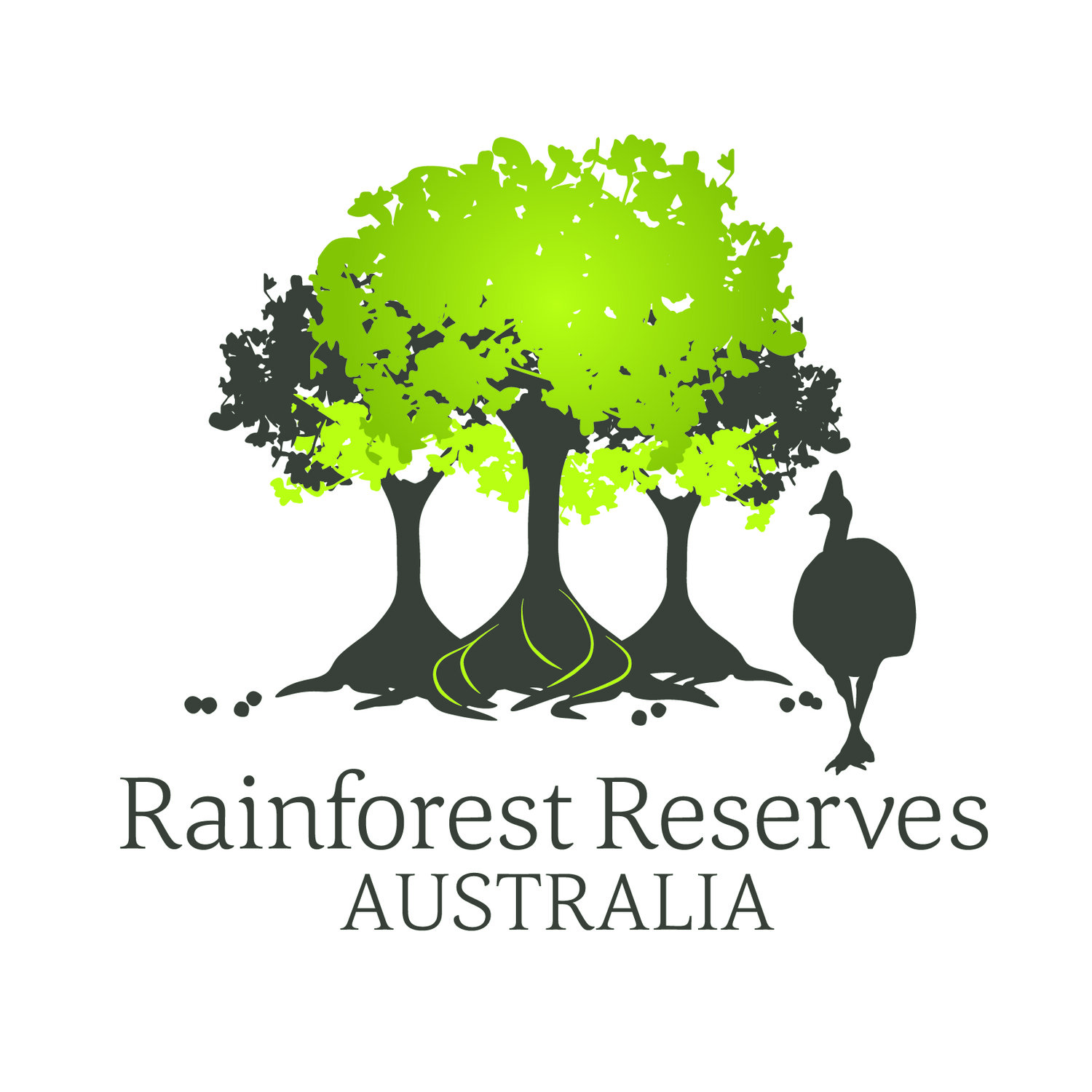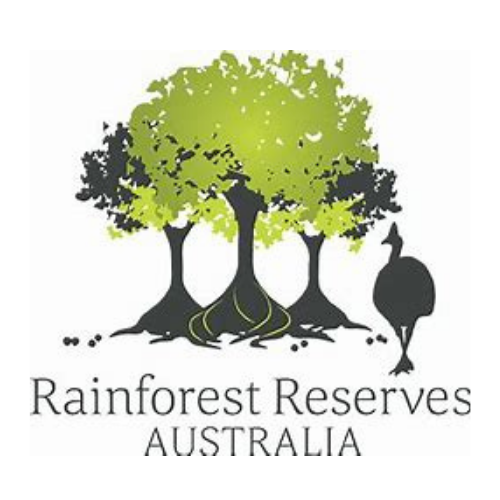Above: Proposed offshore wind farms off the coast of Victoria.
Above: A slide from Dr Miller’s presentation in Malanda showing Procellariiformes bearing monitoring devices for research on flight patterns - information which will be utilised by Offshore wind developers.
On Thursday 3rd July 2025, some of our team attended a talk hosted by Birdlife North Queensland by Dr Mark Miller at the Malanda Pub, Far North Queensland. Dr Miller, an advocate for offshore wind farms, shared his research on potential impacts to seabirds from offshore turbines.
We learned from Dr Miller that:
Anecdotally, young scientists are lucky because wind companies are providing work opportunities, allowing ecologists to segue smoothly from university into the wind industry with a bonus of government funded research grants to ensure offshore wind farms get over the line. (Never mind the fate of the species they research, as long as not too many die!)
Offshore wind companies don’t like to pay for cameras to monitor birds who are struck by turbines because they’re expensive.
Offshore wind proponents don’t like to curtail turbines to preserve seabird life either, as this cuts into profits.
Seabirds killed by turbine strike not monitored at offshore wind farms. Carcass surveys are impossible to perform at an offshore wind farm, so it’s impossible to glean the real impacts.
Procellariforms, tube-nosed seabirds such as Albatross, Petrels and Shearwaters, are acknowledged to be at risk from offshore wind in Australia. Procellariiformes are the most numerically abundant seabird family[i]. Slow reproducing and long-lived – a badly sited off shore wind farm can kill breeding adults and impact local populations. That these seabirds are monogamous, can live long lives (Shy Albatross are known to live for 60 years), and their highest concentration worldwide is in southern ocean was not explicity stated. But an offshore wind farm is being proposed in some of this ocean: Star of the South is a proposed offshore wind farm to be sited 10km off the coast of Gippsland.
Dr Miller found little conclusive evidence regarding heights Procellariforms fly due to his small dataset. He found specifically that a few Shy Albatrosses and the Gould’s Petrel (?) appear to fly at a lower range (under 35 metres, below the range of turbine rotor sweep area for Star of the South), but he admits his own research is limited and it’s all about the quality of the data (much is needed) and that more research is required. His recent study concludes: “Our systematic review found sufficient information in the literature to quantify flight speed and nocturnal flight activity for Procellariiform species and flight groups. However, information on mean flight height was too scarce and information on time in the Rotor Swept Zone too uncertain to inform collision risk modelling, representing a key information gap.” [ii]
Even so, determining the height at which species fly is not a failsafe. For example, proponents of Kaban wind farm (FNQ) stated in initial documentation that White-throated Needletails, Fork-tailed swifts will incur “no significant impacts… as a result of Project activities” but numerous Needletails and Swifts appear to have already been killed by turbine strike since construction in 2023. Five Fork-tailed swifts and Needletails have already been documented in carcass surveys at Kaban and Mt Emerald wind farms in North Queensland over a 3 year period. These figures only reflect the carcasses of these tiny birds that happened to have been found during the monthly or bi-monthly surveys[iii]. Many small birds that die from turbine strike are never detected at all. It is impossible to know how many are really killed here.
His research conducted involved invasive methods of capturing and and attaching monitoring equipment to Procellariform species such as the Shy Albatross. There are perhaps some examples where invasive methods of survey are warranted, but to catch and attach tracking devices to threatened seabirds, who are already experiencing stressors, to destroy their aerial habitat for an expensive and resource-intensive intermittent energy source such as wind is not warranted.
Noise and infrasound impacts from offshore wind, and the pile driving from construction, on seabirds and marine life including dolphins and whales are, by Dr Miller’s own admission, unknown.
Offshore wind turbines can be beneficial when they create ‘artificial reefs’ on sea floors which can have positive effects on ecosystems destroyed by overfishing and dragnets. Dr Miller discussed an example of a tracked seal that visited numerous wind turbine sites to feed upon fish there. However during construction, sea beds are disturbed and delicate organisms displaced and killed. Whether disruption to such large tracts of this fragile ecology is warranted for intermittent energy is questionable.
According to Dr Miller, offshore wind is a good choice for Australia and perhaps a better alternative to onshore wind. This remains to be seen however. As it stands, it appears we are set to be inundated with large-scale onshore wind and solar farms, Battery Energy Storage Systems (BESS), and pumped hydro developments.
Perhaps most concerning of all was Dr Miller’s foregone conclusion that offshore wind is necessary and inevitable for Australia.
Our own research found that:
CONSTRUCTION NOISE IMPACTS MAY BE LETHAL FOR MARINE LIFE
“Imagine being at an airport with a Boeing 747 at full power and you put your head near the engine. That's how loud it is. There is concern that if fish are very near piles being driven into the sediment, the sound may be loud enough to kill, or at least severely damage, them.” states Arthur N. Popper, a professor emeritus in the University of Maryland's Department of Biology on the sound of pile-driving during offshore wind farm construction.
A recent study found that pile-driving sounds from offshore wind farm construction badly impacted certain fish species in South East Asia. “Species-specific responses to pile driving noise found in three major aquaculture fish in East Asia. Seabass and seabream greatly changed swimming speed and group cohesion with noise playback. More than half of seabass and seabream individuals habituated within 5 min after noise playback. Seabass was most sensitive species to noise stress showing clear avoidance from the noise source. Implication for consideration of species- and environment-specific biological impact assessments. https://www.sciencedirect.com/science/article/pii/S0025326X24008701
OPERATIONAL NOISE NEVER CONSIDERED
Offshore wind farm development project causes the elevation of low-frequency noise level. This noise can impact several kilometres (Wahlberg and Westerberg, 2005), with its intensity increasing with higher wind speeds and larger turbine sizes.
Elevated noise levels can potentially affect fish vocalization behaviour. Reduced duration and intensity of fish chorus was observed in the noise-affected area during a study in Taiwan[i]. Long-term monitoring required to understand change in fish vocalization phenology.
“Marine animals depend heavily on sound. Sound is one of the few communication signals that travel quickly across long distances in the oceans and are not stopped by low light levels or objects in the environment. One of my colleagues and I have argued—and it's reasonably accepted now—that hearing evolved in fishes to give them a bigger worldview than they would get from any other sense. Vision has a limited range and is useless in the dark, and chemical signals travel slowly and are subject to currents. To get a long-distance, 360-degree view of what's going on around them, sound is the best form of communication.” - Arthur N. Popper, interviewed here.
LIGHT FLICKER IMPACTS MARINE LIFE
Shadow flicker from rotating turbines may impact marine life. One 2024 study concludes “aquatic receptor organisms present in the uppermost layer of the sea in the vicinity of wind turbines are potentially exposed to direct motion cues originating from moving turbine blades and also, when the sun elevation angle is greater than ca. 20°, to dynamic shadowing cues.” The impacts of continual shadow flicker on marine life in the upper layers of the ocean are unknown.
SEABIRDS MUST CHANGE MIGRATORY PATHS OR BE KILLED BY TURBINE STRIKE
Seabirds have to alter migratory paths to avoid offshore wind farms, leading to potential impacts such as starvation down the line as they expended more energy and flew a further distance to get to their destination
All 20 of the albatross species found in Australia are listed in Australian law as threatened with extinction.
Seabirds are pushed out of their habitat and altered migratory patterns ensue. The birds are forced to go out of their way and which can affect their survival. There is no way to know outcomes for birds who may be impacted this way.
New research suggests that seabirds and marine mammals forage in the same areas where wind potential is most significant and that their populations may be at risk if wind farms are built there[iii].
MORE UNANTICIPATED CONSEQUENCES THAT DAMAGE ECOSYSTEMS
A perfect example of this occurred in 2021, when it was observed that brown crabs were found to be mesmerised by the electrical current of undersea cables off the coast in Scotland, leading to biological changes.
Stated Alastair Lyndon, an associate professor at Heriot-Watt University’s centre for marine biology and diversity: “Underwater cables emit an electromagnetic field. When it’s at a strength of 500 microteslas and above, which is about 5% of the strength of a fridge door magnet, the crabs seem to be attracted to it and just sit still.That’s not a problem in itself. But if they’re not moving, they’re not foraging for food or seeking a mate. The change in activity levels also leads to changes in sugar metabolism – they store more sugar and produce less lactate, just like humans.”
TOO MANY UNKNOWNS
86% of possible offshore wind farm impacts on ecological services are still unknown.[ii]
OUR POSITION
The position of Rainforest Reserves Australia is that renewable energy proliferation in Queensland is currently inflicting too high a cost on our biodiversity.
We thank Birdlife for hosting this informative and relevant talk and speaker, and look forward to more opportunities to discuss renewable energy impacts on bird and marine life into the future.
[i]https://www.sciencedirect.com/science/article/abs/pii/S0025326X24009469
[ii] https://www.sciencedirect.com/science/article/pii/S0964569124000085
[iii] https://phys.org/news/2025-04-overlap-offshore-farms-areas-high.html
[i] https://besjournals.onlinelibrary.wiley.com/doi/10.1111/1365-2664.70088
[ii] https://besjournals.onlinelibrary.wiley.com/doi/10.1111/1365-2664.70088
[iii]https://docs.google.com/spreadsheets/d/1C3N29KYby3d5uLK2obtdDeEBT7_WuxLHizXZX2qLkTo/edit?usp=sharing
Do offshore wind turbines harm wildlife?
An Endangered Shy Albatross, resident of the southern seas off the coast of Tasmania and Victoria, now under threat from Offshore wind farms - JJ Harrison (https://www.jjharrison.com.au/)


